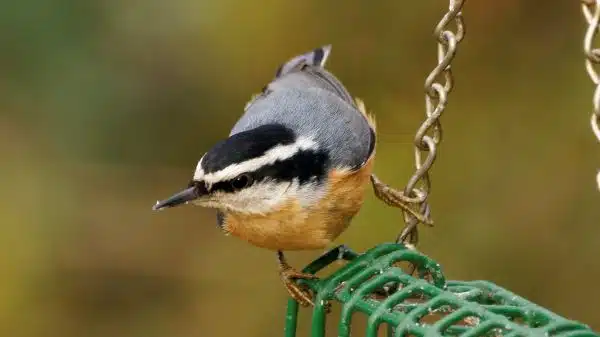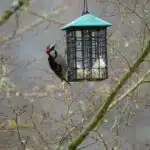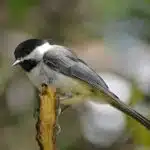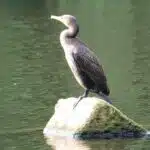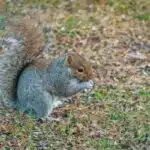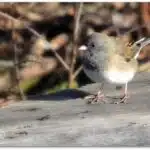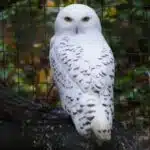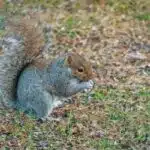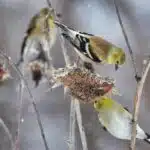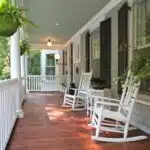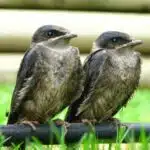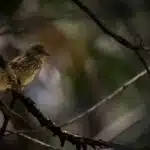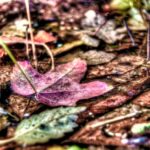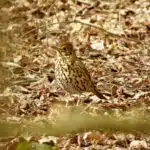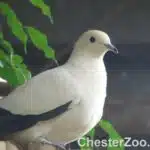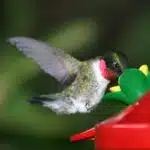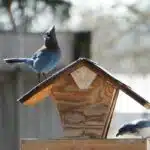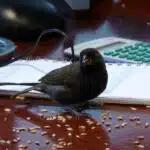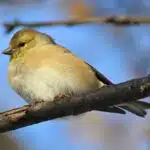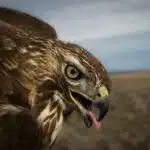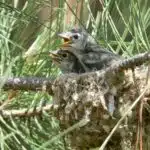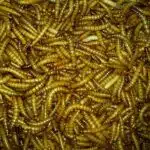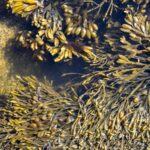Nuthatches are small, lively birds that can add a charming touch to any backyard. They are known for their unique behavior of climbing down tree trunks headfirst, often displaying acrobatic prowess while searching for food. Nuthatches also have a distinctive call and are easily recognizable once you know what to look for. If you want to attract these delightful birds to your yard, there are several things you can do.
Creating an inviting habitat for nuthatches involves providing the right kinds of food, shelter, and nesting sites. It’s important to understand their feeding habits and preferences in order to choose the best birdfeeders and seeds. Additionally, nuthatches need certain types of trees and vegetation which provide cover and nesting opportunities. By following some simple guidelines, anyone can create a welcoming environment that will attract these engaging birds and provide them with the resources they need to thrive.
Getting To Know Nuthatches
Nuthatches are small, energetic birds that are known for their unique behaviors and striking appearance. There are several different species of nuthatches found throughout North America, each with distinct identifying features such as eye color, bill shape, and plumage. These birds are popular among birdwatchers and nature enthusiasts due to their active nature and intriguing characteristics.
One of the most notable behaviors of nuthatches is their tendency to move headfirst down tree trunks in search of food. This behavior is facilitated by their strong legs and feet, which allow them to grip onto the bark while using their sharp bills to pry insects out of crevices. Nuthatches also have a unique vocalization pattern, often producing a series of nasal “yank-yank” calls or trills to communicate with one another.
To successfully attract nuthatches to your yard, it’s important to understand the specific species that inhabit your region and their habitat requirements. Providing suitable food sources such as suet or sunflower seeds can help entice these birds into your yard, as can providing nesting boxes or natural cavities for them to raise their young. By taking steps to learn more about nuthatch behaviors and preferences, you can create a welcoming environment that encourages these fascinating creatures to visit and thrive in your backyard.
Understanding Their Habitat Requirements
As wildlife conservationists, we know that nuthatches are native to wooded areas and prefer mature deciduous forests. These birds have a unique behavior of searching for food upside-down on tree trunks and branches. They also use cavities in trees for nesting and roosting. Therefore, if you want to attract nuthatches to your yard, understanding their habitat requirements is essential.
Here are some tips on how to create an ideal habitat for nuthatches:
- Preserve mature trees: Nuthatches prefer mature trees as they provide better opportunities for feeding and nesting. Ensure that you maintain a wooded area with plenty of mature trees such as oaks, maples, and hickories.
- Provide dead wood: Dead wood provides an essential habitat for insects that nuthatches rely on as a food source. By leaving dead or dying trees standing in your yard, you can create a suitable environment for these birds.
- Install nest boxes: If there aren’t any natural cavities in the trees available, installing nest boxes can help promote successful breeding by providing a safe place for nuthatches to raise their young.
Habitat preservation is vital not only for attracting nuthatches but also for their survival. By maintaining a natural woodland ecosystem in your yard, you can contribute to the conservation efforts of these beautiful birds. In the next section, we will explore how providing food and feeders can further enhance the chances of attracting more nuthatches to your yard.
Providing Food And Feeders
To attract nuthatches to your yard, providing food and feeders is a crucial step. One of the easiest ways to do this is by offering DIY feeders that are specifically designed for nuthatches. These birds have unique feeding habits, so it’s important to choose feeders that cater to their needs. You can make these feeders at home using simple materials such as wood, mesh, and screws.
When it comes to seasonal feeding schedules, you should keep in mind that nuthatches prefer certain types of food during different times of the year. During winter months, they tend to consume more protein-rich foods like suet and mealworms since insects are scarce. In warmer months, they prefer seeds and peanuts. Offering a variety of foods throughout the year will not only attract nuthatches but also provide them with a healthy diet.
By providing DIY feeders and following seasonal feeding schedules, you can easily attract nuthatches to your yard. However, it’s important to remember that choosing the right seeds is just as essential as providing adequate feeders. In the next section, we’ll discuss some tips on selecting seeds that are suitable for nuthatches’ dietary needs.
Choosing The Right Seeds
Attracting nuthatches to your yard can be an enjoyable and rewarding experience. However, it is essential to choose the right seeds to encourage these birds’ presence in your yard. Seed quality plays a critical role in attracting nuthatches. It would be best if you chose high-quality, fresh seeds that are free from dust and debris.
When selecting seeds, opt for blends that contain black oil sunflower seeds or striped sunflower seeds. These types of seeds are highly nutritious and high in fat, which is essential for nuthatches during winter months when food sources are scarce. Additionally, consider adding peanuts or suet cakes to your bird feeder as nuthatches enjoy these foods.
Feeder placement is another important factor when attracting nuthatches. Place the feeder at eye level or slightly higher to provide easy access for these birds. Ensure that the feeder is secure and stable as nuthatches prefer sturdy perches while feeding. By providing high-quality seeds and proper feeder placement, you can attract a variety of birds, including the elusive and charming nuthatch species.
To ensure a successful bird feeding experience, it’s essential to avoid common mistakes that many people make when setting up their feeders. One of the most common mistakes is placing too many feeders too close together; this can lead to territorial disputes between birds and discourage them from visiting your yard altogether. Another mistake is neglecting your feeder’s cleanliness; dirty feeders can spread disease among birds and reduce the quality of seed offered. Proper maintenance, such as cleaning feeders regularly with hot soapy water and disinfectant solution, ensures a healthy environment for both you and your feathered friends!
Avoiding Common Feeding Mistakes
After choosing the right seeds to attract nuthatches, it is important to be aware of common mistakes and feeding problems that can arise when attempting to attract these birds. One mistake people often make is providing too much food at once. While nuthatches are known for their hearty appetites, overfilling feeders can lead to waste and potential health issues for the birds.
Another common mistake is not regularly cleaning bird feeders and offering stale or moldy food. This can lead to the spread of disease among bird populations, as well as discourage nuthatches from visiting your yard. To avoid this problem, it is recommended to clean feeders at least once a week with a solution of one part vinegar to nine parts water, and replace seed every two weeks.
Feeding problems can also arise from placement of the bird feeder. Nuthatches prefer secluded areas, such as near trees or shrubs, where they can hide while eating. Placing feeders in open areas may discourage them from visiting. Additionally, feeders should be placed at a height that is easily accessible for the birds but away from predators such as cats.
| Common Mistakes | Feeding Problems |
|---|---|
| Overfilling feeders | Open areas |
| Not cleaning feeders regularly | Inaccessible heights |
| Offering stale or moldy food | Predators |
As you focus on attracting nuthatches to your yard, it’s important to offer more than just food sources. These birds require access to water sources for drinking and bathing. Consider adding a bird bath or small fountain to your yard to provide them with this essential resource. By addressing both feeding and watering needs, you will have created an inviting habitat that encourages nuthatches and other wildlife species to visit your space regularly.
Offering Water Sources
Birds need water for drinking, preening, and bathing. Providing a reliable source of clean water is crucial to attracting nuthatches to your yard. A bird bath is an excellent way to offer water, and its design and placement can make all the difference.
The design of the bird bath should be shallow, no more than two or three inches deep, with a rough surface that allows birds to grip it with their claws. The size should also be appropriate for the species you want to attract – nuthatches prefer smaller baths that are easier for them to navigate. Additionally, consider adding a dripper or fountain feature that will create sound and movement in the water. Nuthatches are attracted to moving water as it mimics natural sources like streams and rivers.
Water placement strategies are also important when attracting nuthatches. Try placing the bird bath near trees or shrubs so that birds have easy access to perches where they can dry off after bathing. It’s also helpful to place it away from busy areas of your yard where there is noise and activity as this may deter birds from using it. Finally, ensure that the water stays clean by changing it regularly and rinsing out any debris such as leaves or feathers.
Providing a reliable source of clean water is just one step towards attracting nuthatches to your yard. The next step involves creating nesting opportunities – another essential component in supporting these beautiful birds’ livelihoods and wellbeing.
Creating Nesting Opportunities
Nesting boxes are a great way to attract nuthatches to a yard, as they provide a safe and secure place for them to build a nest. When placing nesting boxes, it is important to consider the type of tree that the box will be attached to, as some nuthatches prefer certain types of trees. Additionally, adding brush piles to the area can provide an additional nesting site for nuthatches, as well as a place to hide. It is important to ensure that the brush piles are no larger than five feet in diameter, as larger piles can be difficult for the birds to use. Furthermore, trees should be trimmed, as nuthatches prefer trees with smaller branches and can be discouraged by larger branches. Lastly, the location of the nesting boxes, brush piles, and trees should be considered, as nuthatches prefer areas that are not overly exposed to the elements.
Nesting Boxes
To attract nuthatches to your yard, it is important to create nesting opportunities. One effective way to do this is through DIY construction of nesting boxes. These boxes provide a safe and comfortable place for birds to build their nests and raise their young.
When constructing a nesting box, it is important to consider the size and design. Nuthatches prefer boxes that are roughly 6 inches square with a 1-½ inch entrance hole located about 5 inches from the bottom. The box should also have ventilation holes near the top and drainage holes in the bottom. Proper placement of the box is also crucial, with a recommended height of 6-10 feet off the ground and facing away from direct sunlight or strong winds.
By providing nesting boxes for nuthatches in your yard, you are not only helping these birds thrive but also contributing to wildlife conservation efforts. With careful consideration of design and placement tips, anyone can create an ideal environment for nuthatches to nest and raise their young in your own backyard.
Trees
Creating nesting opportunities for nuthatches in your yard is an excellent way to contribute to wildlife conservation efforts. DIY construction of nesting boxes is one effective method, but there are other ways to attract these birds, such as planting trees. Trees provide a natural habitat for nuthatches and offer a safe place for them to build their nests and raise their young.
Tree planting is an essential aspect of creating nesting opportunities for nuthatches in your yard. It is recommended to plant native trees that offer a suitable environment for these birds. Trees like oaks, hickories, and maples provide an ideal habitat for nuthatches, with their strong branches offering a safe place to build their nests. Proper pruning techniques are also crucial in maintaining healthy trees that can withstand the demands of bird nesting.
In conclusion, tree planting and pruning techniques play a vital role in providing nesting opportunities for nuthatches in your yard. By incorporating these methods with DIY construction of nesting boxes, you can create an ideal environment for nuthatches to nest and raise their young in your own backyard while contributing to wildlife conservation efforts.
Brush Piles
Creating effective nesting opportunities for birds is a significant step towards wildlife conservation. While planting trees and building nesting boxes are essential methods, creating natural brush piles in your yard can also attract nuthatches and other bird species. Brush piles offer a safe haven for birds to build their nests, hide from predators and harsh weather conditions.
To create an ideal brush pile, it is recommended to use natural materials such as fallen branches, twigs, leaves, and bark. These materials should be piled loosely to create spaces for birds to enter and exit easily. Additionally, the brush pile should be situated in a secure location away from human traffic and potential predators.
Using brush piles for other bird species is also beneficial for wildlife conservation efforts. For example, woodpeckers, wrens, sparrows, thrushes, and warblers use brush piles as shelter during the winter months or when migrating. Therefore, by incorporating natural brush piles into your backyard habitat design, you can provide a safe space not only for nuthatches but also for other bird species.
In summary, creating natural brush piles in your yard can significantly contribute to providing nesting opportunities for nuthatches and other bird species while enhancing their survival rates. Incorporating various methods such as tree planting pruning techniques DIY construction of nesting boxes can create an ideal environment that supports wildlife conservation efforts.
Selecting Birdhouses And Nest Boxes
Birdhouses and nest boxes provide an ideal habitat for nuthatches to breed, nest, and raise their young. When selecting a birdhouse or nest box for nuthatches, it is essential to choose one that meets their specific needs. DIY options are available for those who want to build their own birdhouses or nest boxes. These can be customized to fit the size and style preferences of the homeowner while providing a safe haven for nuthatches.
When choosing a decorative style for a birdhouse or nest box, it is important to remember that functionality should always come first. Nuthatches are attracted to natural materials such as wood, so it is best to avoid plastic or metal designs. The entrance hole should be around 1 ¼ inch in diameter, which is just big enough for nuthatches but too small for larger predators such as squirrels.
By providing suitable nesting sites through the use of birdhouses and nest boxes, homeowners can help promote the breeding success of nuthatches in their yard. Understanding the breeding habits of these birds is crucial in selecting the right type of nesting site. In the next section, we will explore more about nuthatch breeding behaviors and how they impact their choice of nesting location.
Understanding Breeding Habits
Breeding season behavior in nuthatches is a highly intricate process that involves complex social interactions. During the breeding season, male nuthatches will select a suitable nesting site and begin to build their nests, often using materials such as bark, grasses, and feathers. They will then proceed to attract a female by singing and performing courtship rituals.
Courtship rituals are an essential aspect of nuthatch breeding behavior and involve various actions intended to impress potential mates. For instance, males may fluff out their feathers, spread their wings wide open, or perform elaborate displays of acrobatic abilities. Once a female has been successfully attracted, she will inspect the nest before laying eggs.
To ensure successful breeding outcomes for nuthatches in your yard, follow these tips:
- Provide suitable nesting sites such as birdhouses with small entrance holes.
- Offer food sources rich in protein such as suet cakes or mealworms during the breeding season.
- Avoid using pesticides or other chemicals that can harm birds and their offspring.
- Maintain a clean environment around the nesting area to reduce the risk of predators.
By understanding the intricacies of nuthatch breeding habits and taking appropriate measures to support their reproductive success, you can help attract these fascinating birds to your yard. However, it’s also crucial to remember that maintaining a clean environment is equally necessary for ensuring their continued presence in your area.
Maintaining A Clean Environment
The conservation of natural habitats and ecosystems is paramount for the ongoing protection of wildlife. Recycling is a great way to reduce the amount of waste entering the environment, helping to keep it clean. Water conservation techniques can be implemented to help reduce the amount of water used, leaving more of the resource available for wildlife and other species. The protection of natural habitats should be a priority for all those interested in wildlife conservation, as it can provide shelter and food sources for many species. Recycling programs involve the reuse of materials and products, reducing the overall waste produced and helping to keep the environment clean. Finally, water conservation can involve the implementation of water-efficient practices, such as using low-flow showerheads, which can help reduce the amount of water used and preserve the environment.
Protecting Natural Habitats
Nuthatches are a delightfully charming bird species that can bring life and energy to any backyard. If you’re looking to attract these delightful creatures, one of the best ways is by providing them with a suitable habitat. Habitat conservation is an essential aspect of maintaining a clean environment. It involves protecting natural habitats from destruction and degradation, which in turn, ensures the survival of various plant and animal species.
Creating an ideal habitat for nuthatches requires an understanding of their unique needs. These birds prefer wooded areas with plenty of mature trees and shrubs where they can find food and nesting sites. Providing bird feeders with nuts or suet cakes is another way to attract nuthatches to your yard. However, it’s essential to ensure that the feeders are kept clean and free from mold or bacteria that could harm the birds.
Environmental awareness is critical in maintaining healthy habitats for wildlife species like nuthatches. It starts with understanding how human activities affect natural ecosystems and taking steps to minimize our impact on them. By adopting eco-friendly practices like reducing waste, using renewable energy sources, and conserving water, we can help protect natural habitats that support nuthatches and other wildlife species. Ultimately, by taking care of the environment around us, we’re serving not just ourselves but also future generations who will benefit from a cleaner and more sustainable world.
Encouraging Recycling
Encouraging recycling is another crucial aspect of maintaining a clean environment that can benefit nuthatches and other wildlife species. Recycling helps reduce waste that would otherwise end up in landfills, polluting the environment and harming wildlife. By reusing materials through upcycling projects or recycling programs, we’re reducing our impact on natural habitats and preserving resources for future generations.
One way to encourage recycling is by making it easier for people to recycle. Municipalities can offer curbside recycling services, making it more convenient for residents to dispose of recyclable materials. Additionally, businesses can implement recycling programs within their organizations, encouraging employees to recycle and reducing waste in the workplace.
Another way to encourage recycling is by educating people on its benefits and how to recycle properly. Many people are unaware of what materials are recyclable or how to prepare them for recycling. Educational campaigns can help raise awareness about proper recycling practices, making it easier for people to reduce their environmental impact.
By encouraging recycling and reducing waste, we’re taking an important step towards maintaining healthy habitats for nuthatches and other wildlife species. As stewards of the environment, it’s our responsibility to minimize our impact on natural ecosystems so that they can continue to support diverse plant and animal life. With a little effort, we can create a cleaner, more sustainable world for ourselves and future generations.
Conserving Water
Water conservation is another crucial aspect of maintaining a clean environment that can benefit nuthatches and other wildlife species. Conserving water helps reduce the stress on natural habitats, particularly during periods of drought. By reducing our water usage, we’re preserving this precious resource for future generations and minimizing our impact on the environment.
One way to conserve water is by using drought-resistant plants in landscaping. These plants have adapted to thrive in dry conditions and require less water than traditional landscaping plants. Additionally, using mulch in gardens can help retain moisture and reduce the need for frequent watering.
Another way to conserve water is by being mindful of our daily habits. Simple actions such as turning off the tap while brushing our teeth or taking shorter showers can significantly reduce our overall water usage. Additionally, fixing leaks in faucets or toilets can prevent wasted water from going down the drain.
By incorporating water conservation practices into our daily lives, we’re taking an important step towards maintaining healthy habitats for nuthatches and other wildlife species. As responsible citizens of the planet, we must strive to minimize our impact on natural ecosystems and ensure their sustainability for future generations. With a little effort and awareness, we can create a cleaner, more sustainable world that benefits both ourselves and the environment around us.
Minimizing Pest Problems
Minimizing Pest Problems:
Creating an inviting environment for nuthatches requires more than just providing food and shelter. Pests such as rodents and insects can deter these birds from visiting your yard. Utilizing natural repellents is an effective method to keep pests at bay without harming the environment. For example, planting certain herbs such as lavender, mint, and rosemary repel mosquitoes and flies while attracting beneficial insects that prey on harmful pests.
Companion planting is another effective strategy to minimize pest problems. This involves planting different crops together to improve growth and reduce pest damage. For instance, planting marigolds with tomatoes deters nematodes, a type of worm that damages roots. Additionally, interplanting beans with corn attracts beneficial insects that prey on damaging pests like caterpillars.
Incorporating natural repellents and companion planting techniques can create a healthier ecosystem for nuthatches while minimizing pest problems in your yard. By using these methods instead of chemical pesticides, you are also doing your part in preserving the environment for future generations.
As we have discussed, minimizing pest problems is crucial in creating a welcoming environment for nuthatches in your yard. However, it’s equally important to monitor bird behavior to ensure they are thriving in their habitat. In the next section, we will explore ways to observe and understand the behavior of these fascinating birds.
Monitoring Bird Behavior
To attract nuthatches to your yard, it is essential to minimize pest problems. These birds feed on insects and seeds, so ensure that there are enough natural sources of food in your garden. Avoid using pesticides and herbicides as they can harm the birds’ food sources and may also be toxic to the birds themselves.
Once you have successfully attracted nuthatches to your yard, monitoring their behavior can provide valuable insights into their habits and preferences. Recording sightings and analyzing behavior can help identify patterns such as preferred feeding times and locations. This information can be used to optimize bird feeding stations or create new habitats that cater specifically to nuthatches.
Observing bird behavior is an exciting way to learn about these fascinating creatures while contributing to their conservation. Documenting your observations through photography or writing is an excellent way to keep track of your findings. By sharing this information with other bird enthusiasts or wildlife conservation organizations, you can help contribute to a greater understanding of nuthatch ecology and behavior.
Documenting Your Observations
Observing birds in your yard can be a rewarding experience, especially if you are a bird lover or conservationist. Documenting your observations is an essential aspect of this activity, as it helps you track the behaviors of different bird species and identify patterns in their movements. Observation techniques can vary from simple to complex methods, depending on your level of interest and expertise.
To begin with, start by identifying the types of nuthatches that frequent your yard. This may require some research on your part. Once you know what kind of nuthatches you have around, observe their feeding habits and preferences. Nuthatches are known for their acrobatic abilities and love to cling to tree trunks while they forage for insects or nuts. By observing these behaviors closely, you can learn more about their favorite foods and when they are most active.
Another useful technique for documenting your observations is to keep a journal or logbook. This will allow you to record important information such as dates, times, weather conditions, and any unusual behaviors that you might observe. You can also use photographs or videos to capture images of nuthatches in action, which can be very helpful when trying to identify specific individuals or behaviors.
By tracking the behaviors of nuthatches over time, you can gain valuable insights into their ecology and biology. This knowledge can be shared with others who are interested in learning more about these fascinating birds and how they interact with their environment. Sharing your knowledge with others is an important step towards creating a community that values wildlife conservation and stewardship.
Sharing Your Knowledge With Others
Sharing experiences and knowledge is a crucial step in conserving wildlife. By sharing what we have learned, we can encourage more people to participate in conservation efforts. If you have successfully attracted nuthatches to your yard, take the time to share your experience with others. Whether it be through social media or word of mouth, you can inspire others to create a welcoming environment for these beautiful birds.
Encouraging participation from others is key to creating a successful wildlife conservation community. By sharing our knowledge of how to attract and care for birds like nuthatches, we can motivate others to do the same. This not only benefits the birds but also helps promote environmental awareness and appreciation.
Incorporating a 3 column and 4 row table into your message can help evoke emotion in your audience. Use images and descriptive language to showcase the beauty of nuthatches and their importance in our ecosystem. This will help engage your audience and encourage them to take action towards creating a welcoming environment for these fascinating birds.
By sharing our experiences and encouraging participation from others, we can make a positive impact on our local wildlife population. Take pride in knowing that you are contributing to something greater than yourself by creating an environment where nuthatches can thrive. Enjoying the beauty of these birds in your yard is just one small step towards building a better world for all creatures great and small.
Enjoying The Beauty Of Nuthatches In Your Yard
Sharing your knowledge about how to attract nuthatches to your yard can be a fulfilling experience, especially when you see the results of your efforts. According to a recent survey conducted by the National Audubon Society, nuthatches are one of the most popular bird species among backyard birdwatchers in North America. This is because they are active and entertaining birds that are easy to spot and appreciate.
Appreciating their antics is one of the joys of having nuthatches in your yard. They are known for their acrobatic abilities, as they climb up and down tree trunks and branches with ease. They also have an amusing habit of hanging upside down while searching for insects in the bark crevices. You can enhance your enjoyment of these delightful birds by providing them with some specific habitat requirements.
Photography tips can be useful for capturing stunning images of nuthatches in action. These birds are fast-moving and agile, which makes photographing them a challenging but rewarding experience. To get the best shots, you should use a fast shutter speed and a telephoto lens with image stabilization capabilities. You should also focus on their eyes to capture their sharp gaze and distinctive markings. With patience and persistence, you can create beautiful images that showcase the beauty and charm of these remarkable birds.
Conclusion
Nuthatches are fascinating birds that can brighten up any yard with their cheerful calls and unique behaviors. Understanding their habitat requirements and providing them with the right food and feeders is crucial to attracting these beautiful creatures. Choosing the right seeds and avoiding common feeding mistakes can also make a significant difference in how often nuthatches visit your yard.
Monitoring bird behavior and documenting observations can help you learn more about these birds’ habits, leading to a deeper appreciation of their beauty. Sharing your knowledge with others can also help raise awareness about the importance of protecting these valuable creatures. Ultimately, attracting nuthatches to your yard is not only a rewarding experience but also a way to contribute to wildlife conservation efforts.
In conclusion, attracting nuthatches to your yard requires patience, dedication, and an understanding of their unique needs. As wildlife conservation writers, it is our responsibility to raise awareness about the importance of protecting these birds and their habitats. Just like planting a seed in fertile soil, nurturing our relationship with nature can lead to fruitful results that benefit both us and the world around us.
Image Credits
- “Red-breasted Nuthatch” by this is for the birds (featured)

